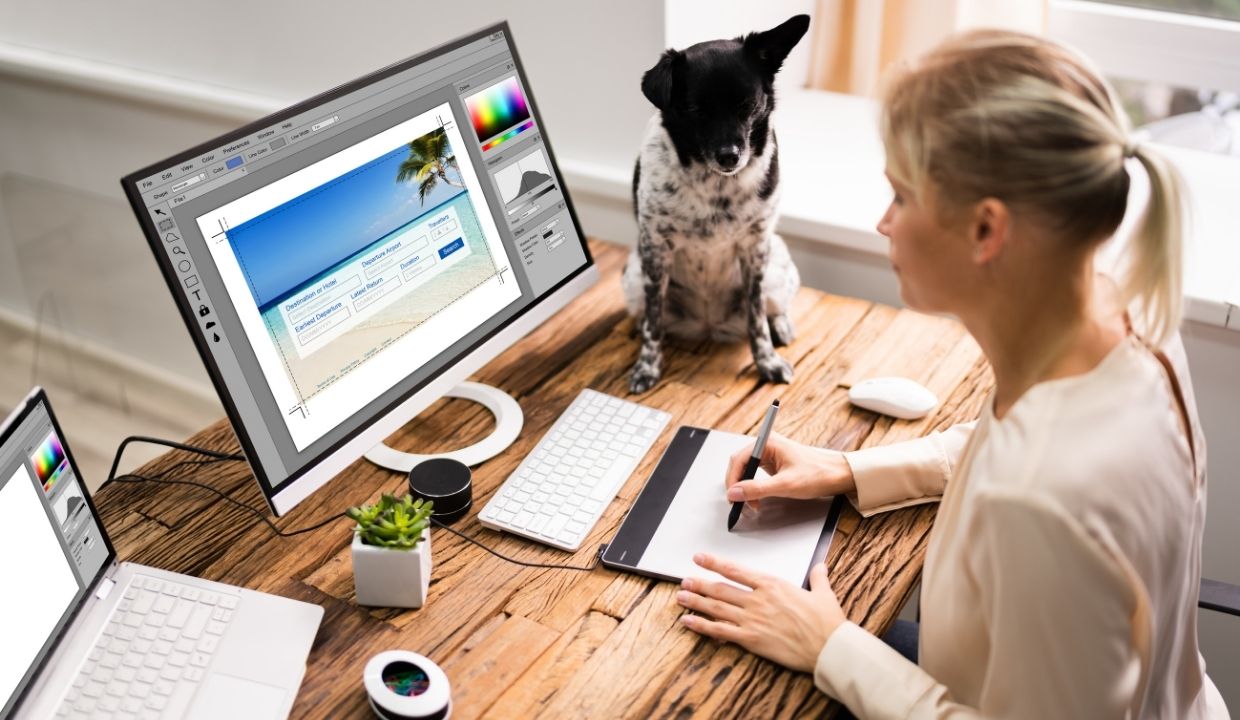Before we delve into the nitty-gritty of creating a powerful web design proposal, let’s understand its significance. Your proposal is often the first point of contact with potential clients, and it sets the tone for your future collaboration. A well-crafted proposal can make a lasting impression and increase your chances of winning the project.
Understand Your Client’s Needs
To create a compelling proposal, you must first understand your client’s requirements. Conduct thorough research on their business, target audience, and industry. By gaining insights into their needs and pain points, you can tailor your proposal to address specific concerns and showcase your understanding of the project.
Showcase Your Expertise
Demonstrating your expertise is crucial in convincing potential clients that you are the right web designer for their project. Here are some effective ways to showcase your expertise:
- Portfolio of Past Projects: Create a visually appealing portfolio that showcases your best and most relevant work. Include a diverse range of projects that highlight your versatility and ability to handle various design styles.
- Case Studies: Accompany your portfolio with detailed case studies of previous projects. Describe the client’s initial challenges, your approach to solving them, and the successful outcomes. This demonstrates your problem-solving skills and the impact of your work.
- Client Testimonials: Gather testimonials from satisfied clients and display them prominently on your website or proposal. Positive feedback from previous clients adds credibility and builds trust with potential clients.
- Industry Certifications: If you have earned any relevant certifications in web design or related fields, showcase them. Certifications validate your skills and knowledge, making you a more reliable choice for clients.
- Awards and Recognitions: If you’ve received any awards or recognition for your design work, highlight them. Awards serve as proof of your excellence and can set you apart from competitors.
- Expert Blog Content: Maintain a blog on your website where you share valuable insights and tips related to web design. Well-written blog posts demonstrate your expertise and authority in the field.
- Speaking Engagements and Workshops: If you’ve presented at industry conferences or conducted design workshops, mention them. Speaking engagements show that you are respected in the industry and have in-depth knowledge to share.
- Contributions to Design Communities: Being an active member of design communities, such as contributing to forums or design groups, exhibits your commitment to continuous learning and networking.
- Specialized Skills: Highlight any specialized skills you possess, such as expertise in responsive design, accessibility, or user experience (UX) design. These skills can be valuable selling points for certain projects.
- Client Success Stories: Share success stories of how your design solutions helped clients achieve their goals. Real-life examples illustrate the tangible benefits of working with you.
Remember, when showcasing your expertise, focus on the aspects that align with your potential client’s needs. Tailor your presentation to demonstrate how your skills and experience can address their specific challenges and deliver exceptional results.
Presenting a Clear Scope of Work
Clearly define the scope of the web design project in your proposal. Outline the deliverables, such as the number of web pages, design revisions, and post-launch support. Include a detailed timeline with key milestones to set realistic expectations.
Making Your Proposal Visually Appealing
In the competitive world of web design, a visually appealing proposal can make a significant impact on how potential clients perceive your professionalism and creativity. Here are some essential elements to consider when making your proposal visually appealing:
|
Visual Element |
Description |
Benefits |
|
Attractive Graphics and Images |
Incorporate relevant and eye-catching graphics that align with the client’s brand and project theme. |
– Captures attention and creates a positive first impression. |
|
|
Use high-quality images to showcase your previous design work and portfolio. |
– Demonstrates your design skills and capabilities. |
|
Consistent Brand Identity |
Ensure that your proposal reflects your own brand identity, including logo, colors, and fonts. |
– Reinforces your professionalism and brand recognition. |
|
|
Consistency throughout the proposal enhances credibility. |
– Builds trust and assures the client of your attention to detail. |
|
Clear and Engaging Layout |
Organize the proposal with a clear and easy-to-follow layout. |
– Makes it easier for clients to navigate and understand the content. |
|
|
Use headings, subheadings, and bullet points to break down information. |
– Enhances readability and highlights key points. |
|
Whitespace and Visual Hierarchy |
Utilize whitespace effectively to create a balanced and visually pleasing design. |
– Prevents the proposal from feeling cluttered and overwhelming. |
|
|
Establish a visual hierarchy to prioritize essential information. |
– Guides the reader’s attention to the most critical aspects of the proposal. |
|
Infographics and Data Visualization |
Incorporate infographics and visual representations of data. |
– Presents complex information in a more digestible and engaging manner. |
|
|
Infographics can convey statistics, processes, and concepts creatively. |
– Helps the client understand the project scope and potential outcomes more effectively. |
By combining these visual elements, you can create a web design proposal that not only showcases your creativity and design skills but also makes a lasting impression on potential clients. Remember, a visually appealing proposal sets the tone for your professionalism and attention to detail, increasing the likelihood of winning the client’s trust and securing the project.
Providing Competitive Pricing
Pricing can be a decisive factor for clients. Research the market and offer competitive yet reasonable pricing. If applicable, present different pricing packages with varying levels of service to provide options.
Addressing Potential Concerns
Addressing potential concerns in your web design proposal demonstrates foresight and proactive problem-solving skills. By acknowledging and providing solutions to possible client questions, you instill confidence in your ability to handle challenges. Here are some common concerns and ways to address them:
|
Potential Concern |
Solution |
|
Timeline and Deadlines |
Clearly define the project timeline, including milestones and deliverable dates. |
|
|
Explain how you will ensure timely communication and updates throughout the project. |
|
|
Offer a buffer time for unexpected delays, demonstrating your commitment to meeting deadlines. |
|
Budget and Pricing |
Provide a detailed breakdown of your pricing, outlining what each cost includes. |
|
|
Be transparent about any potential additional costs that may arise during the project. |
|
|
Offer different pricing packages, allowing clients to choose the one that aligns with their budget. |
|
Scope Creep |
Define the project scope clearly and specify what falls within and outside the scope of work. |
|
|
Emphasize that any additional features or changes will be discussed and agreed upon separately. |
|
|
Mention your willingness to accommodate minor adjustments without impacting the project timeline or budget. |
|
Communication and Support |
Assure the client of your availability and responsiveness during the project. |
|
|
Provide multiple communication channels (email, phone, video calls) for easy interaction. |
|
|
Offer post-launch support and maintenance options to address any issues that may arise after the project. |
|
Compatibility and Integration |
Discuss the compatibility of your design with different browsers, devices, and platforms. |
|
|
Explain how you will ensure a responsive and user-friendly experience across various environments. |
|
|
Address any concerns about integrating the design with existing systems or third-party applications. |
By preemptively addressing potential concerns, you demonstrate professionalism and dedication to client satisfaction. Be thorough in your explanations and ensure that the client feels heard and understood. Your ability to provide clear and reassuring solutions can significantly increase the client’s confidence in your services and lead to a successful partnership.
Showcasing Testimonials and Reviews
Social proof is powerful. Include testimonials and reviews from satisfied clients to build trust and credibility. Testimonials offer evidence of your ability to deliver results and satisfy your clients’ needs.
Implementing a Call-to-Action (CTA)
End your proposal with a clear and compelling call-to-action. Encourage the client to take the next step, whether it’s scheduling a meeting, signing a contract, or requesting further information. Make it easy for them to get in touch with you.
Following Up Effectively
After sending the proposal, follow up with the client in a timely manner. Express your enthusiasm for the project and answer any additional questions they may have. A proactive and attentive approach can leave a positive impression.
In conclusion, creating an impactful web design proposal requires a combination of understanding your client’s needs, showcasing your expertise, and presenting your proposal professionally. By following the tips and tricks outlined in this article, you can increase your chances of winning web design projects and growing your client base.
FAQs
- Q:
How long should my web design proposal be?
◦ A:
Your proposal should be concise yet comprehensive, typically ranging from 5 to 10 pages.
- Q:
Is it necessary to include pricing details in the proposal?
◦ A:
Yes, including transparent pricing details helps build trust with the client.
- Q:
Can I use templates for my web design proposal?
◦ A:
While templates can be helpful, tailor each proposal to the specific client for a personalized touch.
- Q:
Should I send the proposal as a PDF or in another format?
◦ A:
PDF is often the preferred format for proposals as it ensures consistency and professionalism.
- Q:
How soon should I follow up after sending the proposal?
◦ A:
Follow up within a week to show your eagerness to proceed with the project.




Leave a Reply